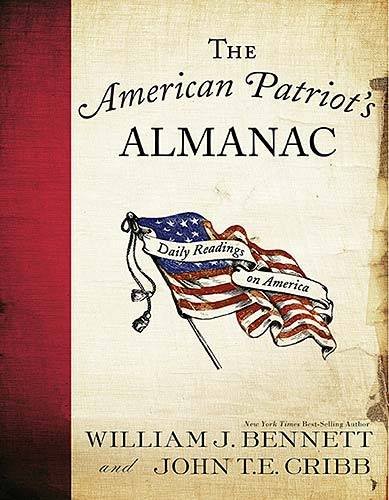by Donna | Apr 27, 2015

Does your public library have a “customs collection” service? The Fort Wayne, IN public library system does, and it is amazing. If you aren’t aware of this, I suggest calling your library and asking about it–especially if you teach using unit studies of any kind.
(more…)
by Donna | Sep 20, 2014
Hey, RKWC friends! We are moving all of our blogs in a consolidated manner over to WORDPRESS!
Eventually, Raising Kids With Character blog/seminar, Character Ink homeschool publisher and services, and Language Lady blog posts and updates will be over there!
And to give you some incentive to go over and subscribe, like our FB page, etc., we are running a grand prize giveaway worth over three hundred dollars in conjunction with our ebook launch. (Check out the new ebook by Kathie Morrissey of Character Corner and myself: “Sixty Homeschooling Tips From Sixty Years”!)
So…here is our giveaway page….while you there, please subscribe and go LIKE us on FB! (And Kathie’s pages too!)
https://characterinkblog.com/?p=170
by Donna | Jul 5, 2013
Our favorite patriotic “devotional”! Our two sons, ages fifteen and eighteen, asked me to get this back out for this summer’s reading since we haven’t done it for two years now. I LOVE this book. Short readings–about 5 to 10 minutes each, plus “This day in history list” for each day. So inspiring!
You might be familiar with one of the authors, William J. Bennett, from his amazing story collection, “Book of Virtues” (a great read aloud book for families with multi ages of children and even older children!). He has done it again in this wonderful 365 excerpt patriotic book!
If you homeschool, you want this book! If you homeschool and you are doing American history this year, you definitely want this book! 🙂
“American History Parade” pg. 235 (Today in history)
1776 The Continental Congress adopts the Declaration of Independence
1802 The US Military Academy opens at West Point, NY
1826 John Adams, age ninety, and Thomas Jefferson, age eight-three die
1831 James Monroe, fifth US President, dies at age seventy-three
1959 A forty-ninth star is added to the flat to represent the new state of Alaska
1960 A fiftieth star is added to the flat to represent the new state of Hawaii
Click here or on the picture below to get this book!

DISCLOSURE: I am an affiliate for these products that I recommend. If you purchase these items through my links, I will earn a commission, but you will not pay more when buying a product through my link. ?
Save
Save

by Donna | Jan 11, 2013
 |
| Nursery Bible |
I still smile as I envision this beautiful picture Bible, The Bible in Pictures for Little Eyes, by Kenneth Taylor, sitting atop my nursery dresser, part of the decor of every one of my nurseries–from the pastel “Care Bear” motiff nearly thirty years ago to the last one, a dozen years ago, with toys and hues of deep green and navy. It didn’t matter the color scheme or decorating theme, this Bible was at home in every nursery.
I smile even more, though, when I think back to the hundreds of mornings in which I snatched my little angelic being from his or her crib (after we put the toys in the toy basket in the corner of the crib–you can never start teaching “chores” too early!), telling that child how much Mommy loves her, how much Daddy loves her, how much Brother loves her, how much Sister loves her, and how much Jesus loves her.
I wrapped that sweet bundle in that day’s favorite blankie, and the two of us got cozy in the nursery’s rocking chair. Depending on the age, we would nurse, rock, sing, recite rhymes and verses (or sing verses), and talk about how amazing she was, how soft she was, how great she was going to be in God’s kingdom.
When the feeding and singing were done, it was Bible time–actually, it was “Little Eyes” Bible time–for that is what my toddlers and preschoolers called this precious nursery Bible. (I get misty-eyed thinking of the toddler snatching that Bible off the dresser and following me around with it, saying, “Little Eyes Bible, Mommy?” I have to keep myself from wishing I had stopped what I was doing and read more often…)
After a story or two (the stories are short, just perfect for toddlers or young preschoolers), the “Little Eyes” Bible would get propped back up on the dresser, that cherished spot where this beautiful nursery Bible stood for nearly two decades. And we would start our day, busy, full, precious days that nearly always began with the nursery Bible.
Note: For a thorough review (and where to purchase the original version of this Bible used), see the following link from an earlier blog post: https://charactertrainingfromtheheart.blogspot.com/2010/01/day-thirty-two-start-young-with-bible.html
by Donna | Jan 4, 2013
“The object of education is to prepare the young to educate themselves throughout their lives.” Robert M Hutchins
I wanted to add some more thoughts to yesterday’s “study skills with textbook previewing.” These are in no certain order or age group—just some things that haven’t really fit in the last couple! (How’s that for organizing and study skills???)
1. Taking the textbook preview further
There are a number of ways that you can take the previewing of textbooks that I discussed yesterday even further with your children for more comprehension of the material:
a. Do his first few assignments out of the book with him, pointing out the things again that you observed in your first preview. This will help him see that those things are not just good things to know, but also helpful for completely homework quicker and more accurately.
b. Help him prepare for his first test with his textbook and you by his side. Show him how he can use the glossary, sidebars, table of contents, etc. to quickly fill in his study guide or quickly determine what the most important aspects of the chapter are in order to prepare for a test.
c. As you are previewing a text (for the first time or an additional time), use a large sticky note to record what you find. Write the title of the text at the top, then make notes about what it contains as far as study and homework helps. Stick this in the front of his textbook and help him refer to it when he is doing homework or test preparation. You could even record a plus and minus system, such as
+++ means something is going to be really helpful—a +++ beside the Table of Contents, for instance
+ beside a word he writes in the front of his book tells him that this might be somewhat helpful—Example: +Some graphs
– No study questions at end of chapter—again, he can make a list in the front of his book (on a large sticky note), etc.
d. Help him “label” different sections of his book with sticky notes along the edges. For example, you could put a yellow one at the beginning of each chapter and a pink one on the page that has definitions for that chapter, etc.
2. Prepare your younger student for textbooks by using user-friendly non-fiction books
Maybe you are not in the textbook stage with your kids; however, you can begin preparing them for those all important study skills that I described yesterday with quality non-fiction books. If kids at ages five, six, eight, and ten, learn to navigate around Dorling Kindersley, Eyewitness, and Usborne books (among many others), they will be heads and shoulders above other children who have only been exposed to fictional stories (more on the benefits of fiction later!).
These outstanding non-fiction books have literally hundreds of topics that interest kids, but they are so colorful and alluring, you do not feel like you are “teaching” at all. Additionally, they have many aspects that your child’s future textbooks will also have: glossaries, Tables of Contents, sidebars, graphs, pictures, inserts, definitions, bold font, italics, etc. Reading these to and with your children when they are younger will provide a natural step into textbooks later on.
Note: We teach our students (in our home, our cottage classes, and in our language arts books) a simple memory device for remembering fiction and non-fiction:
Fiction=fake (both begin with f)
Non-fiction=not fake (both begin with nf)






